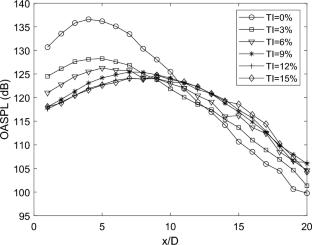An analysis of the effect of the jet initial conditions on the wavelet separated near-field acoustic pressure
Abstract
This paper reports a parametric investigation of the effect of the nozzle exhaust initial conditions on the wavelet separated acoustic pressure generated by a single stream compressible jet in its near field from a database obtained by Large-Eddy Simulations of jet flows at M = 0.9 and Re = \(10^5\). The nozzle–exit boundary–layer conditions consist of different turbulence intensities for fixed thickness and several thicknesses in laminar conditions. Pressure time series are extracted from virtual probes distributed in the near field of the jets and the acoustic components of the near field pressure are extracted using a wavelet-based procedure able to decontaminate the signals from the hydrodynamic contribution. The reconstructed acoustic time series are analyzed in the frequency domain and in terms of Overall Sound Pressure Level (OASPL). The results show that both the boundary-layer thickness and the turbulence level significantly affect the acoustic pressure in terms of both intensity and directivity. In the laminar case, strong sideline components are observed and strongly depend on the boundary layer thickness. These components clearly appearing in the energy spectra are associated with the Kelvin–Helmholtz instability waves. For large nozzle-exit turbulence intensities, the acoustic field is more uniform and less intense in the sideline direction. On the other hand, the streamwise directivity of the acoustic pressure appears to be strictly correlated to the length of the jet potential core which strongly varies with the initial conditions.


 求助内容:
求助内容: 应助结果提醒方式:
应助结果提醒方式:


